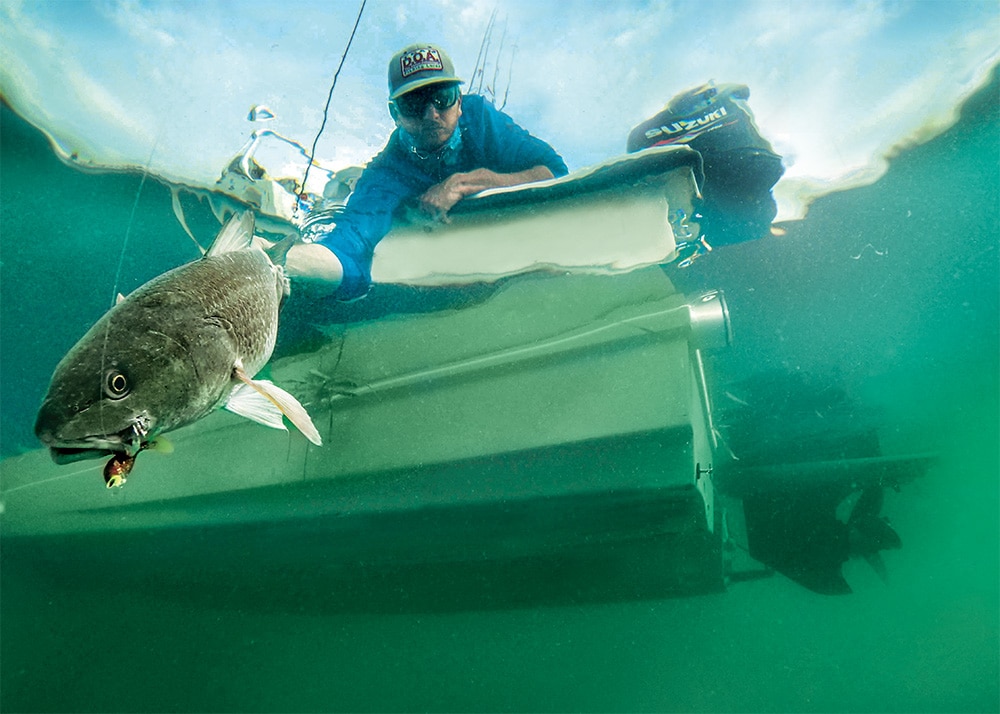
Soft-plastic lures have proven their effectiveness on a variety of gamefish and—because they’re available in a multitude of shapes, colors and sizes, and can be rigged a number of ways—present anglers with a range of options to target most species in many circumstances. If you know which ones to use and the appropriate rigging, soft plastics are the ticket to increasing your catches exponentially.
The wide variety of soft plastics available lets you tailor the lure to the species and fishing situation.
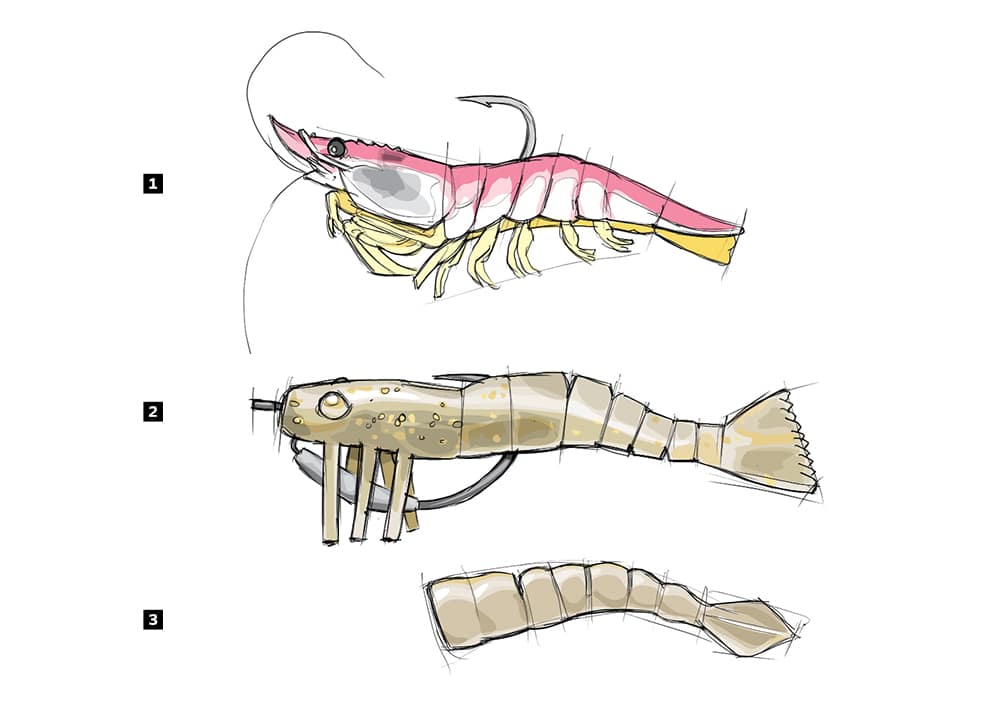
Shrimp Imitations
Numerous soft plastics mimic shrimp, either the full body or just the tail. Some are realistic, others more impressionistic. Some are weighted and rigged with a single or treble hook, but others are meant for rigging with a jig head. On a fast retrieve, this soft-plastic-and-jig combination darts erratically, attracting the attention of predators and drawing impulse strikes. This combo performs best attached to the line with a loop knot, for freedom of movement and extra action.
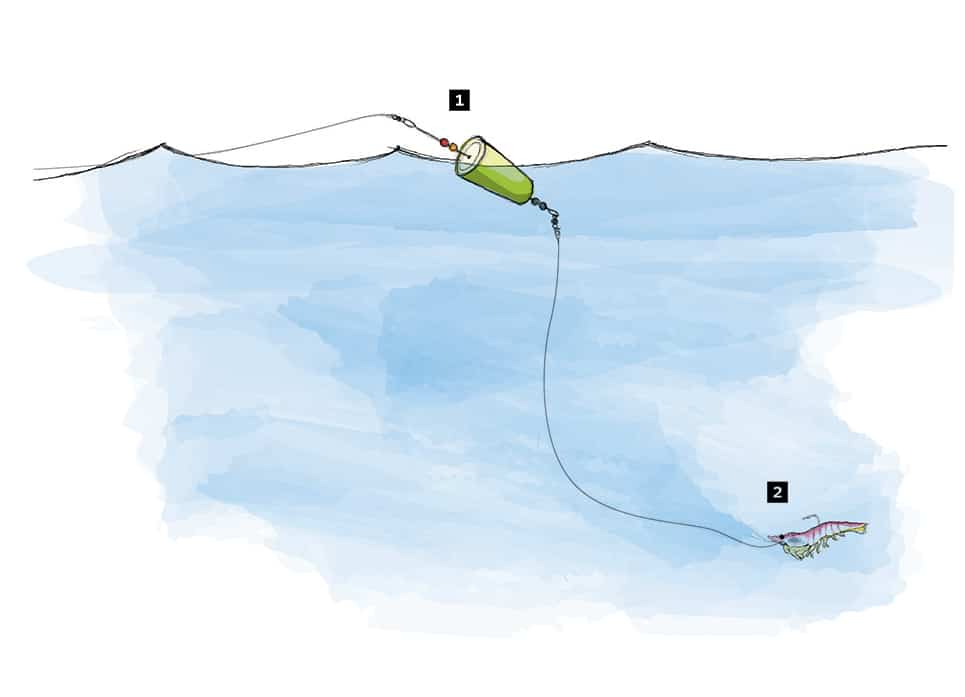
Weighted shrimp imitations and tails on a jig head are effective suspended under a popping cork on 18 to 24 inches of fluorocarbon leader. Cast the rig and reel it in with a stop-and-go retrieve. The surface disturbance created by the float rings the dinner bell and draws aggressive bites from fish zeroing in on the commotion. Popping corks with a cupped face are best suited for this task, and their attractiveness is enhanced by metal or plastic beads that make a serious racket with each jerk of the rod tip.
The most popular sizes of soft-plastic shrimp are 3 to 6 inches, in glow, chartreuse, red and white, chartreuse and pink, silver flake, black and chartreuse, and red shad, with the brighter schemes usually best in stained or muddy water.
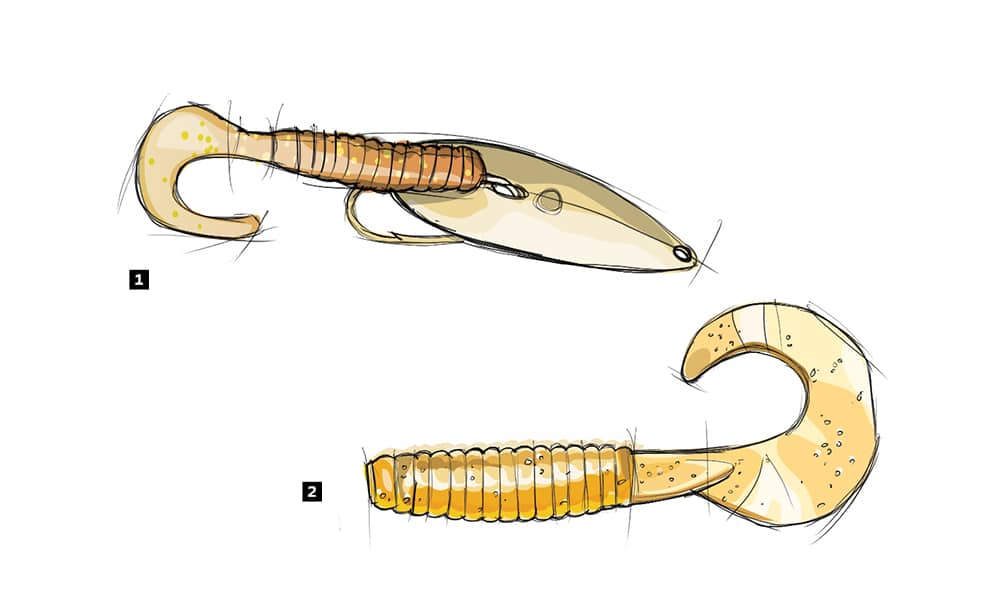
Curly Tails
In off-colored water, a curly tail often kicks your catch ratio up a notch. Designed to twist and turn as it moves through the water, a curly tail has built-in action that, combined with a flashy finish, makes the lure more versatile and seductive. Rigged on a lead-head jig and fished erratically like a shrimp tail or with a steady retrieve, this lure draws strikes from gamefish tricked by the enticing motion.
Three- to 5-inch curly tails are best for targeting inshore species in bays, coastal rivers or bayous. For the surf and offshore, opt for 6- to 8-inch tails. They can be rigged on jig heads or as a trailer on a nylon jig. Long curly tails can be rigged on 1- to 6-ounce jig heads. For fishing offshore, they can be jigged vertically, trolled, or cast and retrieved with a stop-and-go action. When fishing heavier jig heads and tails, rig them up with a 2- to 3-foot wire or fluoro leader. If you’re around toothy fish such as king mackerel or barracuda, a wire leader is mandatory.
For inshore fishing in the bays and on the flats, try rigging a 3-inch curly tail on a straight-shank hook behind a silver or gold spoon. The flash of the spoon in combination with the curly-tail action can be deadly on a variety of gamefish.
The two most popular colors for curly-tail jigs are white and chartreuse, but orange and yellow can save the day at times.
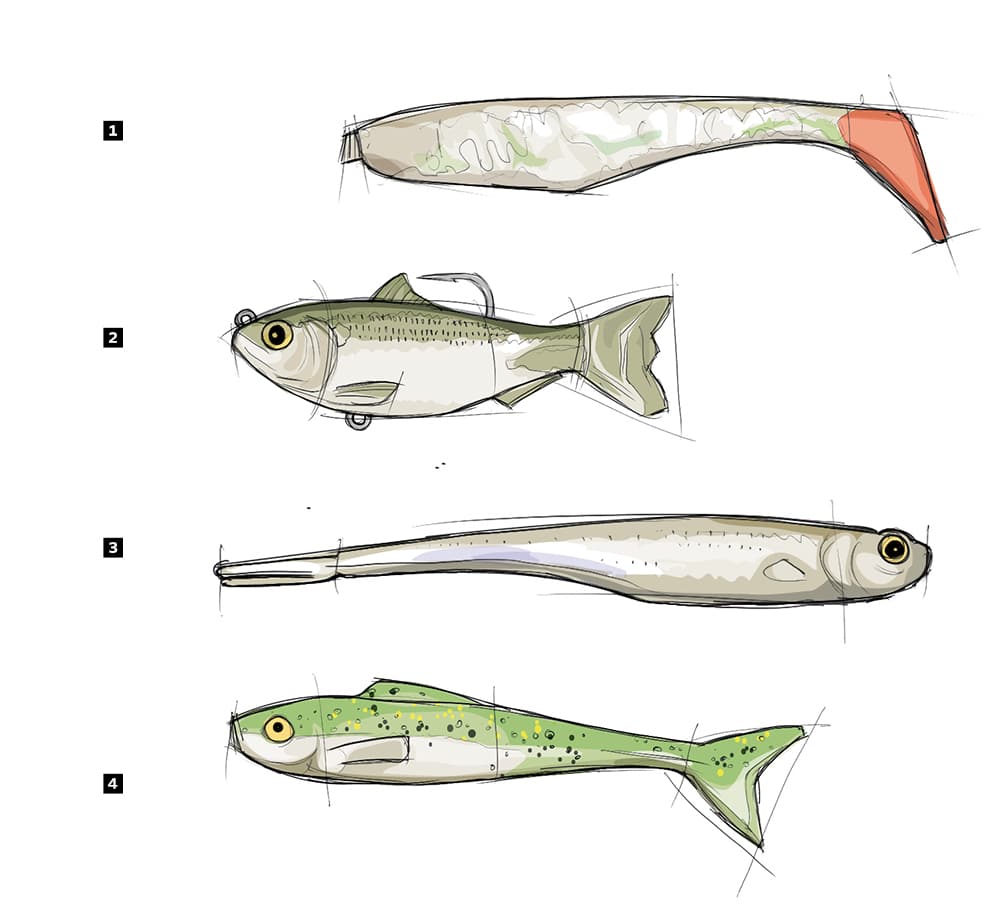
1. Paddle tails are rigged with a jig head or a single weighted hook. They have a built-in swimming action but also mimic shrimp, if retrieved slowly.
2. Swimbaits look and swim like the real deal, and some come weighted and pre-rigged with a hook.
3. Jerkbaits tend to be slender and supple minnow bodies designed to act like floundering prey.
4. Wedge tails have built-in action, similar to a paddle tail, effective at a range of speeds. Mike Sudal
Swimbaits
These imitate baitfish such as menhaden, mullet and shad. They have a round tail that creates action with a slow, steady retrieve, and can be fished on the surface, just below, or allowed to sink deep. They can be rigged with a jig head or a keel-weighted wide-gap hook. One useful trick is to use crimp-on weights to control the sink rate.
Often the best option when there are a lot of baitfish around, swimbaits perform best on a steady retrieve, but a stop-and-go movement often triggers bites when fish are not feeding aggressively. Three inches is the most popular size for 2- to 5-pound inshore game. For bigger fish like cobia, tuna and tarpon, a 5-inch swimbait is a better choice.
Top colors are white, glow or bone, but in murky water, chartreuse, yellow, or combinations like bone and chartreuse or glow and yellow are best. Fish swimbaits on braided line and a 4- to 6-foot fluorocarbon leader with a loop knot for top results.
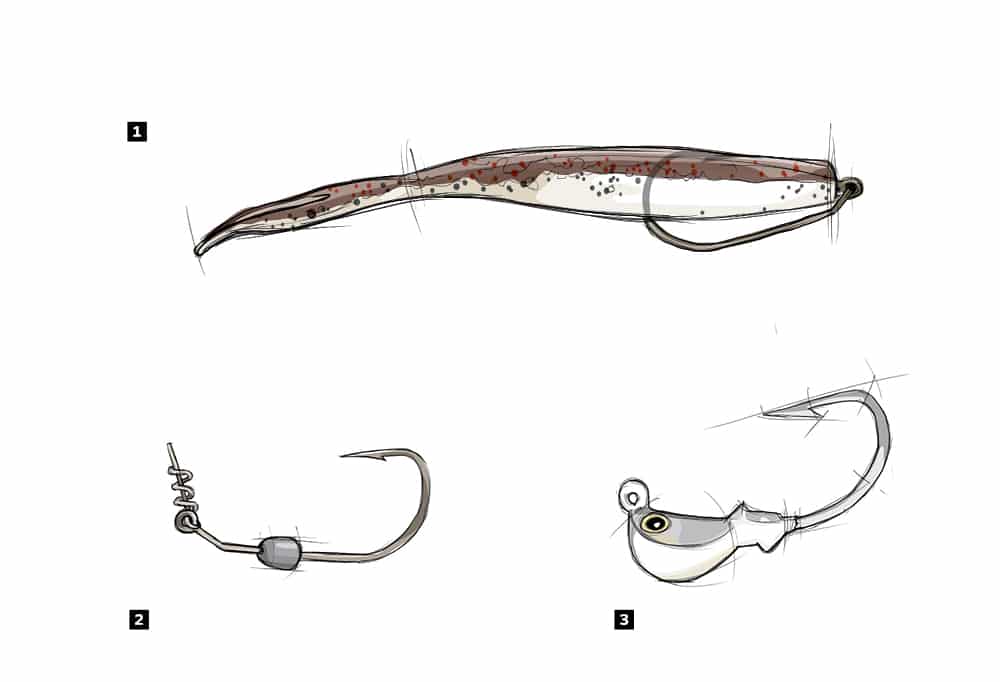
Paddle Tails
Although paddle tails may not be as widely used as other soft plastics, they catch plenty of fish. Designed to generate lots of action like the curly tails, gamefish find their combination of vibration and flashy finish hard to resist. Bright colors are especially effective in stained or muddy water, while red and white, white and pink, and roach and chartreuse are top choices in clear water.
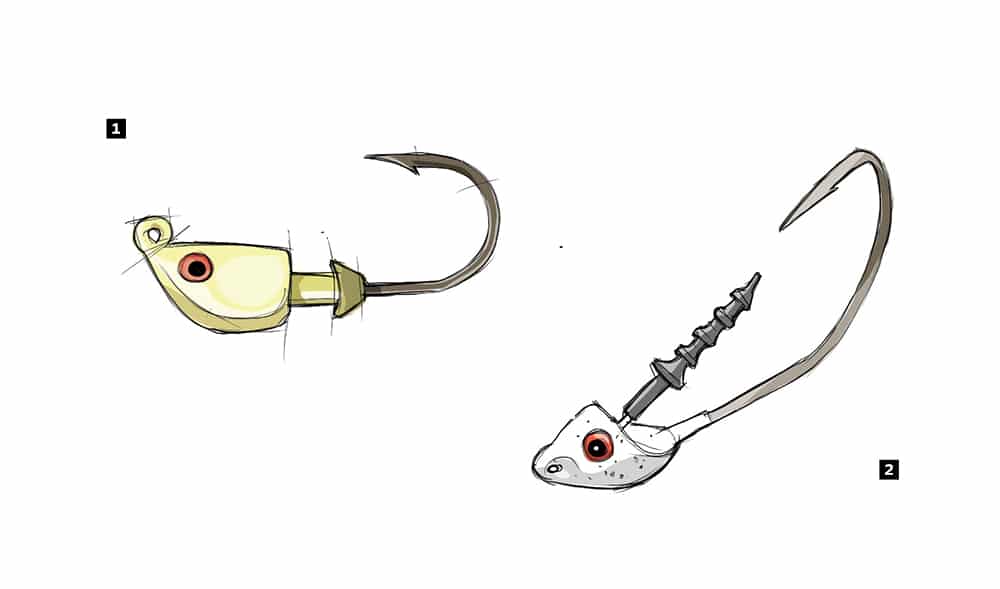
Jig Heads
In addition to classic round, boxing-glove, flat and arrow-shaped jig heads, some resemble a shad or shrimp head, some incorporate rattles, and others feature a screw lock and rattles.
One of the most popular, the screw-lock jig head holds soft plastics on the hook shank longer than other types. Whether eyes on jigs really make a difference is up for debate, but if it gives you confidence, go for it. Many anglers use fingernail polish to paint on big eyes.
Jig heads come in a variety of colors, from white, pink, red, chartreuse, black and unpainted. In murky water, chartreuse or pink heads seem to show up best. The most popular head is unpainted, which leaves you the options of painting it yourself and adding any size eyes you like.
Weedless jig heads can be day savers if you fish around weeds. Some have a single mono weed guard, others have wire weed guards. There are also soft-plastic tails that come with a slot, or pocket, which covers the hook point, making it weedless.
Circle-Hook Jig and Tail
This atypical jig, a 3- to 6-ounce lead-head with a line tie on top originally developed to catch tarpon in deep water, has also proven effective on other species.
Instead of a fixed hook, this jig has an attachment for a soft-plastic tail, and a large circle hook wired to the top of the loop on the jig head. This is ideal for fish feeding on the surface. Cast it to the busting fish and reel it in with a fast up-and-down action.
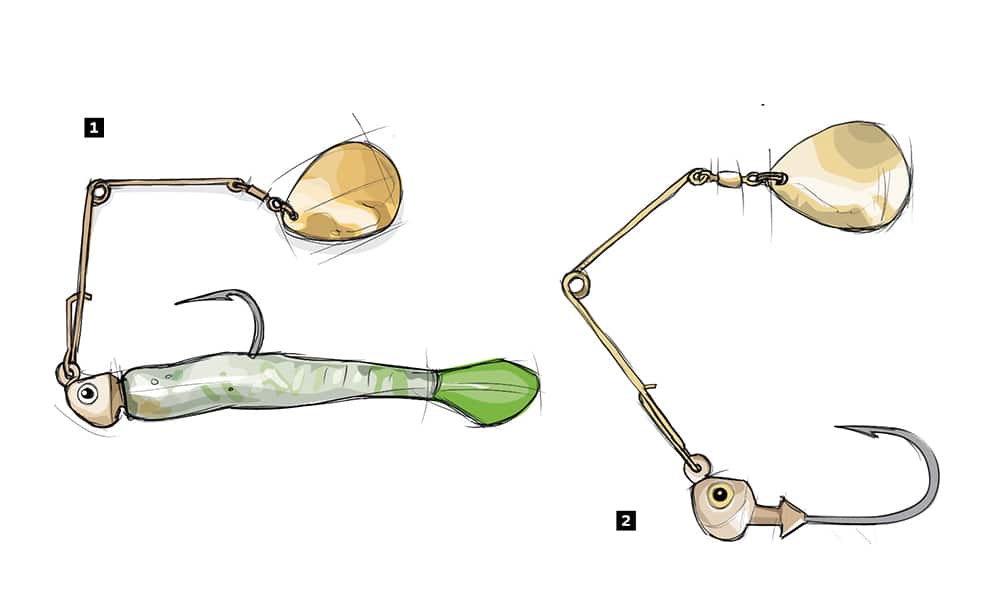
Spinnerbait Jigs
A clip-on-style spinnerbait that attaches to a jig head with a soft-plastic tail works well on the flats, along shorelines, in the surf, and around structure such as pilings, shell reefs, sandbars and wrecks. Jig spinners are sold in gold or silver, but you can customize a blade with spray paint.
Scents and Color Accents Sometimes scented soft plastics attract bites; in other instances, they’re more of a confidence booster. If you think a garlic- or shrimp-scented lure is more effective, you’re likely to fish it methodically and stick with it, so it’ll yield better results. In addition to scent, many fishermen swear by dipping the soft-plastic tails in some sort of dye, such as Spike-It.
Read Next: Choosing Soft Plastic Lures
Versatile and fairly inexpensive, an array of soft-plastic lures belongs in every angler’s arsenal. Just select some that match the natural prey in your home waters, and spend a little time fine-tuning your retrieve. You’ll soon reap the benefits.









